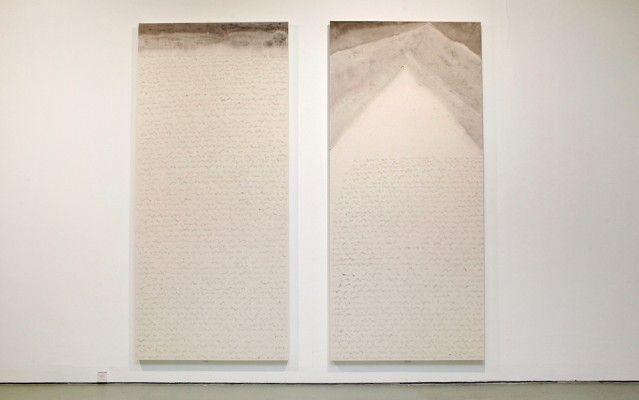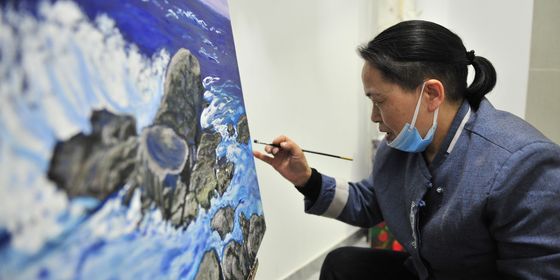From the stuff you eat to the wonders you appreciate
About the Artist: Wang Yizhou (汪一舟)
Wang Yizhou , born in 1968 in Jiangsu Province and now based in Shanghai, trained in oil painting in college and is an established realistic oil painter, but he is obsessed with Chinese traditional culture. This is why he has been exploring and experimenting with modern expressions of traditional Chinese culture. Preferring mountains and water with simple lines, both soft and geometric, his work often reflects complex philosophies. His latest solo exhibition in the Today Art Museum in Beijing, dubbed “Insight”, has brought a new way for people to view traditional landscapes in Chinese paintings.
“Insight” is Wang’s first solo exhibition in China, dubbed “Yi Zhi” (异置), or “Different Placement”. The major installation at the exhibition, “High Mountains” (高山), features mountain sculptures wrapped with Chinese traditional rice paper hanging upside-down.
Rice paper is one of the most important materials in traditional Chinese painting and writing. Its soft matte and re ned texture give it a feeling of warmth. Propped up by steel wires, the mountains have clearly-de ned bones and wrinkles which leave space for imagining rivers and streams owing between. After all, in traditional landscape ink wash drawing, mountains tend to be coupled with water.

High Mountains, 2015
An intriguing facet of “High Mountains” is that when people walk under these sculptures, they become part of the installation. When they look up, they can imagine standing under clouds as the light, still rice paper extends above their heads.
The installation and the hall also form a delicate relationship: the flickering shadows on the white walls cause people to feel they’re underwater watching boats pass, says Tan Ping, deputy director of the China Art Research Institute.

High Mountains, 2015
Wang’s works are full of different clues and purviews. Another installation, “Encounter” (遇见), features rocks scattered around piles of rice paper. Rock, another common object that often appears in traditional old ink paintings, finally “meets” the rice paper on its own.
There are also eight ink wash paintings with acute lines that remind viewers of Western minimalism. Through these works, people enter three-dimensional ink- wash paintings they’d previously only seen on paper. Wang’s work displays a deep understanding of Chinese philosophy as well as the sophisticated practices of Western installation art.

Encounter, 2015
“Wang’s artworks echo a call for respect for nature, which is central to Chinese philosophy, and also discuss the contradictions derived from industrial development that are emphasized by his use of Western experimental art,” says Huang Du, the exhibition’s curator.
“The World on Rice Paper” is a story from our newest issue, “Romance”. To read the whole piece, become a subscriber and receive the full magazine. Alternatively, you can purchase the digital version from the iTunes Store.
Cover image from Wang’s High Mountains, 2015











